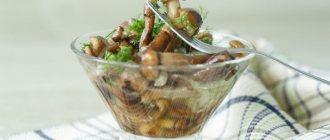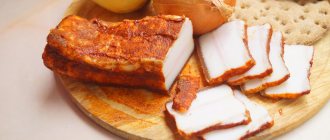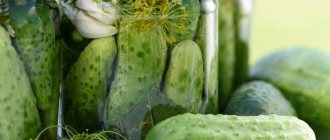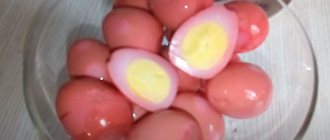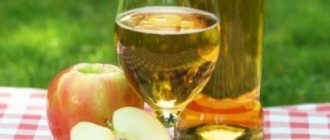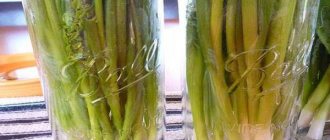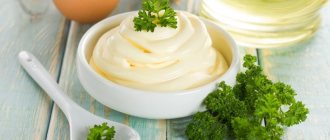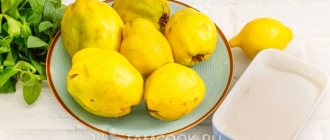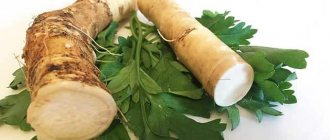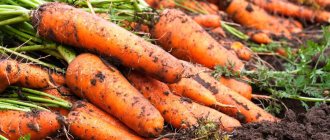Soaked apples for the winter are the easiest preparation for the whole family. The best varieties of apples for this process are late autumn and winter ones: Antonovka, Slavyanka, Anis, Suvorovets, Babushkino and others with dense pulp.
Apples supplied for soaking must be ripe, healthy, without cracks or wormholes. For the winter they are stored in glass jars, buckets, and barrels. Today we’ll look at preparing these fragrant fruits in jars for the winter.
The process of lactic acid fermentation occurs in jars, as a result of which sugar is converted into lactic acid, which prevents the development of harmful microbes. Thus, the fruits can be stored until next season.
Soaked apples for the winter according to an old recipe
The recipe is simple, takes minimal time to execute, and the result is magnificent. Known since time immemorial.
Ingredients for three 3 liter jars:
- Apples
- 5 liters of water
- 100 g salt
- 400 g sugar
- Black currant leaves
Preparation:
1. Place prepared apples into clean jars, alternating them with blackcurrant leaves. Our containers are 3 liter jars and they are already filled to the neck.
2. Now let's prepare the filling. Pour 5 liters of cold water into a saucepan (no need to boil it), add salt and sugar to it. We begin to mix the contents of the filling well until the sugar and salt are completely dissolved.
3. Fill the jars with fruits with syrup so that they are completely covered with it. Then we close the necks with simple nylon lids and leave them like that in the kitchen for 4-5 days. And then we’ll put the soaked apples in a cool cellar for storage.
4. Already in the kitchen, the process of lactic acid fermentation will begin in the jars and the filling will become slightly cloudy. At the same time, the apples will be soaked in syrup and there will be less liquid in the jar. And this is all correct, you shouldn’t be surprised.
5. And before putting them in the cellar, add water to the jars.
6. In just 1 -1.5 months, delicious home-made apples will be ready and ready to eat. I recommend everyone to make this delicious recipe.
How to cook soaked apples with honey
This method of preparing apples for the winter is one of the simplest. At the same time, they are much healthier than compotes or jam made from these fruits. There are no preservatives in the composition; they are prepared without cooking or other heat treatment. The fermentation process makes them even more useful. This recipe is in great demand in our family.
Ingredients:
- 2.5 kilograms of apples
- leaves for aroma (cherry, lemon balm, raspberry, grapes, currants, etc.)
- one and a half liters of water
- 3 tablespoons honey
- one and a half tablespoons of salt
Preparation:
We take only selected apples, without signs of spoilage or rotting. After all, even one spoiled fruit can ruin the entire preparation. We collect them only from trees, we don’t pick them up from the ground. They must be small in size to fit into the neck
Wash the fruits. Leave them whole; no need to cut them. Wash the jar well, preferably with soda. Rinse. There is no need to sterilize - this is unnecessary. Wash all the prepared leaves and dry them. Place some on the bottom. Now lay out the apples quite tightly, to the top. Distribute the remaining leaves on top
Water must be taken unboiled, purified. We warm it up a little, literally up to 40 degrees. Dissolve salt and honey here. They must completely disperse
Pour this mixture over the fruit mixture. They should be completely hidden behind the brine. We leave it in this form in the kitchen for about a week. To be safe, put the jar in a wide, deep dish. Cover the top loosely with a lid or gauze.
Interesting: Korean-style zucchini salads for the winter - 5 simple recipes
Then cover with a nylon lid. We put it in the cellar for 3 weeks. Then you can try. But they will last all winter with no less success.
Apples soaked in pumpkin for the winter in a 3 liter jar
Not many people know this recipe with pumpkin, but it is passed down from generation to generation between relatives.
For the recipe, we will take the Antonovka variety and the Guitar pumpkin, which has few seeds and juicy pulp.
Preparing the recipe:
1. Wash apples and pumpkin. Peel the pumpkin and grate it on a coarse grater by hand or using a food processor.
2. The products are prepared for placing in a 3 liter jar.
3. Place a generous layer of pumpkin on the bottom of the jar and carefully place the apples.
4. Then again add a layer of grated pumpkin and place the apples on it again.
5. We compact the pumpkin with our fingers, because the apples should be tightly packed in it. There should be no gaps in the bank.
6. That's the whole preparation process. We close the jar with a simple lid and take it to a cool place, for example, to a cellar.
7. After a month, the preparation can be eaten. Cook while apples and pumpkin are available.
Apples with mustard, soaked in a barrel
How nice it is to crunch on a sweet and sour apple. And you can make a delicious vinaigrette or an unusual salad with them! If you cook them with mustard, then for long storage and density of the fruit, you don’t need to add any leaves. In a wooden barrel or tub, apples turn out especially tasty.
Will be required:
- apples;
- 10 liters of water;
- 2 tbsp. mustard powder;
- 2 tbsp. spoons of coarse salt;
- 200-300 g sugar.
Preparation:
- Prepare a barrel and straw, select undamaged winter apples, wash and let them dry.
- Bring water to a boil, dissolve sugar and salt in it, add mustard, mix well, let cool.
- Line the bottom of the barrel with straw from a fresh harvest, lay apples on top of it, cover them with straw, etc. The last layer should be made of straw, pour brine over the fruit, cover it with oppression wrapped in a clean cotton cloth, and place a weight on it. You will be able to taste the apples in about a month.
Recipe for soaked apples with rye flour
Find out the ancient classic way of soaking fruits when rye flour is present in the brine.
We will need:
- apples Antonovka variety
- currant leaves
- 2.5 liters of water at room temperature
- 1 teaspoon salt
- sugar - 100 g
- rye flour - 100 g
Cooking method:
1. In a 4.5-liter jar with a wide neck, first put currant leaves, then apples, then again currant leaves and again apples to the very top.
2. Pour water into the pan, add sugar, salt and mix.
3. Gradually add rye flour and stir so that there are no lumps.
4. Pour the brine into the jar to the very edge.
5. Cover the neck of the jar with gauze and leave it like that for a month. If the apples float, then you need to put a pressure on top consisting of a jar of smaller diameter with water.
6. At the same time, you need to check frequently so that when the brine decreases, add boiled water.
Secrets of proper urination
Previously, every housewife knew how to wet apples and other products, because this was one of the few ways available then to preserve food for the winter. In almost every basement there were wooden barrels with pickled apples and cabbage; they were covered with wooden mugs and exuded a sour and spicy aroma. Today, most of the recipes for urination have been lost, but the technology of this process has been preserved.
To ensure that the apples not only turn out tasty, but also be stored for a long time, you need to follow some rules:
- For urination, choose only hard varieties of apples: winter or late autumn. Most often, Antonovka is used for these purposes, because this variety is widespread in gardens and markets across the country. Varieties of apples such as anise, pepin, autumn striped, titovka, and golden are also suitable. All apples must be whole, without damage or wormholes, and especially without traces of rot or mold.
- The utensils for soaking must be sterile so that putrefactive bacteria or molds do not grow in the apples. Before use, containers are steamed or filled with boiling water to kill any bacteria.
- Previously, apples were soaked only in wooden tubs; in the modern world, finding such containers will be problematic. Therefore, the tubs can be replaced with ceramic barrels, glass jars or enamel buckets and pans.
- Soaked apples are also good as a separate dish, but you should definitely try adding them to salads or using them as a side dish for any fatty meat (lamb, Christmas goose or pork).
- Nutritionists recommend eating soaked apples for those who want to lose weight or improve the functioning of the digestive system. They are often eaten during Lent. But children under five years old cannot eat soaked foods - this should be remembered.
- If you have to buy apples for soaking, it is better to do this at the local market or at a dacha cooperative. Store-bought fruits are treated with chemicals to extend their lifespan. During the soaking process, such apples can behave unpredictably, and the chemicals in the brine are unlikely to be useful.
- Before cooking, it is recommended to keep the apples for a couple of weeks in a cold barn or on the balcony, laying them out in rows so that the fruits do not touch. Leaves of trees and shrubs that are planned to be added to the brine need to be soaked in cold water for a couple of hours.
- While the apples are in the basement, you will have to add liquid to them at first, since the fruits will absorb it intensively. Therefore, you should always have a portion of brine or cold boiled water ready.
- On average, ten liters of brine is enough for 2-2.5 buckets of fruit - this must be taken into account in your calculations.
It is very convenient to use hermetically sealed plastic containers for soaking apples. Just be sure to check whether the plastic of the tray is food grade.
Soaked Antonovka apples at home
Try to prepare a traditional, one might even say ancient preparation for the winter - soaked apples in a barrel with rye straw, using the Antonovka variety. This variety is ideal for soaking due to its unique sweet and sour taste.
Ingredients:
- Antonovka apples (or other green, sweet and sour varieties) – about 20 kg
- Plastic container - 50 liters
- Rye straw
- Water – 10 liters
- Table salt, rock salt – 250 g
- Sugar – 750 gr.
- Mustard powder – 2 tbsp. spoons
Preparation:
- We pick ripe and healthy apples from the tree and let them sit for a couple of days. Wash the fruits and dry them slightly.
- 2. Steam the rye straw with boiling water. It should stand for 20-30 minutes in boiling water in order to warm up, then the straw will become elastic and it will be convenient to put it in a barrel.
- Cover a clean plastic container (barrel), which is intended for food products, with a sealed food bag (it should be specifically for pickling and pickling).
- Place a layer of straw at the bottom of the container, then lay the apples up to the middle of the barrel. Again a layer of straw and apples almost to the top. There should be a layer of straw on top.
- For the marinade, dilute salt, sugar and mustard powder in cold water. Fill the container to the top with brine so that all the apples are covered with water. We tie the bag at the top while releasing the air from it.
- We put the barrel in a dark, cool room (for example, a cellar) for a month. After a month, you can enjoy this delicacy all winter long.
How to make homemade soaked apples at home - general tips
- There are three types of apple peeing:
- simple (fill with brine),
- sweet (when there is more sugar than salt),
- sour (when sugar is not used at all).
You can also add mustard, oregano, honey, cinnamon, basil and other spices to the brine. Late or mid-late varieties are used for soaking. But the champion among apples that are suitable for this method of harvesting is, of course, Antonovka.
You should use only picked, strong green or yellow fruits. Picked fruits should sit for about two weeks to identify fruits with flaws.
It is not recommended to use fruits with flaws, as the fermentation process will turn into a rotting process!
- In the old days, apples were soaked in wooden tubs and barrels using rye straw. Straw prevented mechanical damage to apples and imparted a specific taste and amber color to the finished product. But today glass containers of different capacities are more often used.
- Jars, tubs or other containers intended for food products must be sterilized or doused with boiling water. Apples must be completely covered with brine.
- For the first two weeks, the container with apples should be stored at a temperature of 15-18 degrees, and then the container should be moved to a dark, cool place with a temperature of 4-6 degrees, for example, to a cellar.
- After 35-40 days, soaked apples are ready to eat. The finished product should also be stored in a cool, dark place. And if properly stored, apples remain suitable until May!

